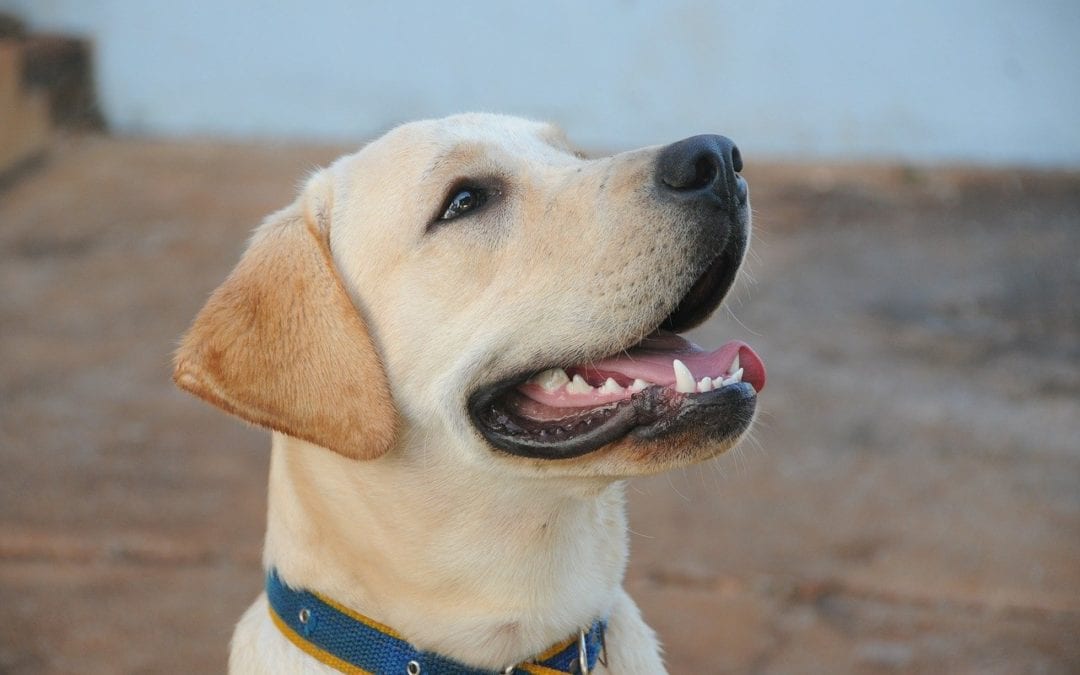Written by Kristen Patterson, DVM.
It can be daunting to consider the task of brushing your pet’s teeth daily, but the many benefits make the effort very important to their health. Brushing helps reduce the accumulation of plaque and tartar, which are associated with bacteria and cause periodontal disease and halitosis. Left untreated, periodontal disease progresses causing soft tissue attachment loss, then bone loss, and finally tooth loss. This is a gradual process and can mean years of deep infection, inflammation and pain. Periodontal disease has also been linked to disease and infection in other parts of the body such as the heart and kidneys.
Bacteria laden plaque accumulation on the tooth will begin to harden into tartar in as little as 24 hours. While plaque can be brushed away, tartar cannot and this is why brushing the teeth once a month or even once a week is ineffective. Daily brushing is the most effective way to keep your pet’s mouth healthy.
The best time to introduce a toothbrush to cats and dogs is around 6 months when the adult teeth are in place. Although it is a good idea to acclimate your pet to handling the lips and mouth when they are young puppies and kittens, brushing while pets are still teething may cause pain, and therefore cause a negative association with the toothbrush.
When beginning the process of brushing your pet’s teeth, start slowly and use treats and a lot of praise. Use a toothbrush designed for pets, or a small head, soft bristled human brush. Use flavored pet toothpaste or plain water. NEVER use human toothpaste. Pets will swallow the toothpaste and fluoride in human toothpaste is harmful to the stomach lining. Start by brushing one tooth and then treating and praising. You may find it helpful to allow your pet to lick the toothpaste and chew the brush at first, then slip the brush to the tooth surface and give a few quick brushing strokes. Concentrate near the gum line, where most plaque and tartar accumulate. When your pet seems to accept this readily, gradually over days or weeks increase the number of teeth you are brushing until all teeth are included. The outer surfaces are the focus. There is no need to brush the inner surfaces that face the tongue and palate, or the biting surfaces. These surfaces do not accumulate the heavy tartar that the outer surfaces do. The entire mouth should take less than 10 seconds to brush. A lot of praise, petting, and treats during and after brushing help your pet enjoy the experience.
While regular brushing is not a substitute for professional oral assessment and treatment under anesthesia, it can certainly help reduce the frequency of this type of veterinary visit. The breed, diet and genetics of your pet also play a role. Some pets require professional dental treatments every 6 to 12 months, while others can go several years between treatments. There are also several products on the market that have been tested in clinical trials and proven effective in reducing plaque and/or tartar, and can be used in addition to brushing. These products include foods, chews, treats and water additives. They have the Veterinary Oral Health Council (VOHC) seal of approval. For a list, go to the website www.vohc.org.
There are some cases where brushing your pet’s teeth is not advised. These are situations where brushing could be painful such as when your pet has advanced, untreated periodontal disease, fractured teeth or tooth resorptive lesions. Schedule a visit with your veterinarian before you start brushing your pet’s teeth to determine if it is appropriate for your pet, and to determine if an oral assessment and treatment under anesthesia prior to beginning a brushing program is needed.
Kristin Patterson, DVM is a Rutland native who has recently relocated back to Vermont from Massachusetts. Dr. Patterson has been practicing Veterinary Medicine for fourteen years. She received her Veterinary Medical Degree from Ross University. Her special interests include dentistry and internal medicine Riverside Veterinary Care & Dental Service in Rutland and Ludlow, VT.

